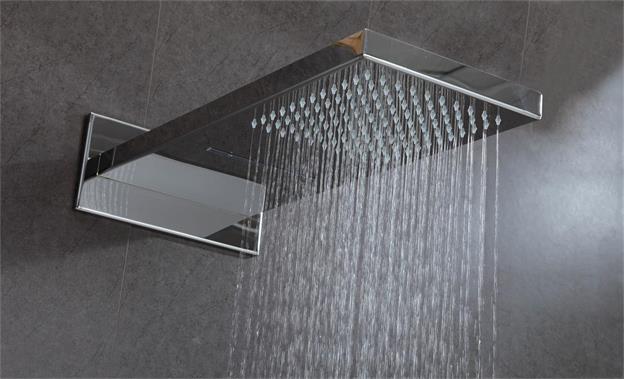Once winter comes, I often hear friends “complain” about the cold weather that causes the toilet, showers and other products to freeze and crack. When the temperature drops in winter, the water temperature for normal use of ceramic sanitary ware is above 4 ℃. When the temperature is below 4 ℃ or even below 0 ℃, the water will freeze and expand to break the ceramic body and valve core. In cold wave or extreme conditions, the volume of liquid water will expand by about 10% after freezing. Therefore, under low temperature conditions, if no preventive measures are taken for the sanitary ware with water, including faucet, shower, toilet, etc., the product may break and leak after freezing
If your home is installed but you have not checked in or your family is out, please timely close the main water valve, drain the residual water in the faucet, shower and toilet, and close the triangle valve and doors and windows to prevent the cold cracking of the sanitary products caused by low temperature.
The product damage caused when the temperature is as low as 0 ℃ and water freezes is not a quality problem and is not covered by our free warranty.

Special reminder: product frost cracking is not within the scope of national warranty.
First is the maintenance of the toilet. In winter, the climate is cold. In order to better maintain the toilet, the temperature in the toilet should not be lower than 0 ℃, otherwise the water in the toilet will freeze; The overheated water cannot be directly poured into the toilet, and explosion occurs under the principle of thermal expansion. Do not use a steel brush to clean the toilet.
The bathroom cabinet is the most common product in the bathroom. The solid wood bathroom cabinet should be prevented from cracking and deformation. After diluting the detergent, the wet cotton cloth should be wiped inside and outside along the wood texture. Wooden bathroom cabinets have relatively strict requirements for the environment in the bathroom, that is, dry and wet separation. The shower room should be separated from other areas, and the direct sunlight should be avoided on weekdays to prevent local wood cracking, deformation and local discoloration of paint film. When cleaning supplies are stored in the cabinet, it is better to put a layer of plastic pad or small square towel under it for easy cleaning. In dry winter, you can also place a glass of water in the bathroom cabinet to avoid deformation or cracking caused by natural evaporation of water in the wood.
Do not use abrasive rags and detergents to maintain faucets and showers, so as not to damage the coating of the product and affect its brightness. In very cold winter, when the indoor temperature is too low, you can wrap the faucet or shower main faucet with soft cloth or objects of similar nature to avoid frost cracking. Do not use acid cleaner to avoid corrosion and affect its service life.
If the toilet, faucet and other products are found frozen (internal ponding, external water inlet pipe, filter and other parts), the following measures can be taken to unfreeze.
1. Please repeatedly use warm water soaked rags to wrap the water inlet pipes, water inlet connections, filters, etc. of toilets, showers and other products, and slowly heat and thaw (or use warm water not exceeding 50 ℃ to pour on the towel wrapped water pipes to thaw slowly);
2. Raise the indoor temperature to thaw it naturally. In some frozen parts, water will flow out during the thawing process. Please observe carefully during the thawing. If there is any damage, please immediately contact the after-sales service for replacement;
3. Do not use hot water or hot air to directly heat the product or water inlet hose, filter and other parts, or damage or explosion may occur.
Post time: Jan-20-2023
